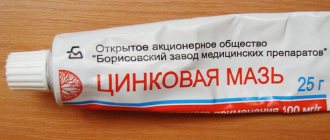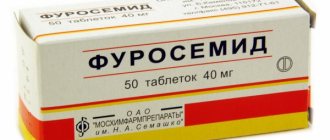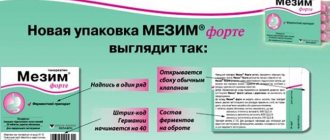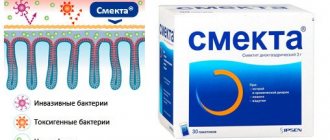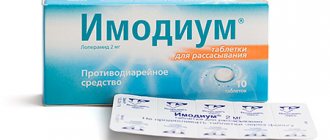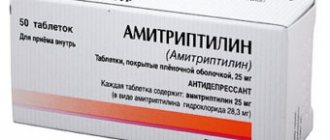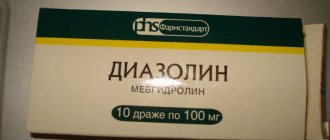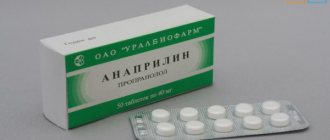It's no secret that foreign brands are becoming increasingly popular in domestic markets. But you can find a decent medicine in your own country. Thus, the Russian-made drug Gabapentin is an ideal option for those who are looking for a way to strengthen the nervous system and reduce the risk of epilepsy attacks.
Release form
Gabapentin has the following dosage forms
:
- The drug is available in gelatin capsules of 100, 200, 300 mg. Capsules are in a blister of 10 or 15 pieces. Blisters are packed in cardboard boxes with instructions for use. The medicine is also available in jars made of polymer materials. The jar contains 50 or 100 capsules.
- Gabapentin Canon is available in gelatin capsules. The contents of the capsule have a yellowish tint. The main active ingredient is gabapentin in an amount of 300 mg. Excipients: potato starch, calcium hydrogen phosphate dihydrate, magnesium stearate, macrogol.
Interaction
were observed as a result of combining Gabapentin with other anticonvulsants and oral contraceptives based on ethinyl estradiol or norethisterone .
Therefore, in complex therapy, the drug is often prescribed with Phenobarbital, Carbamazepine, Valproic acid, and Phenytoin.
The result of combining Gabapentin with other pharmacological products:
- Cimetidine interferes with the metabolism of the antiepileptic drug;
- antacids reduce properties (from 5 to 20%);
- Naproxen increases absorption (in amounts of 125-250 mg to 12-20%);
- Morphine increases the AUC of the active substance of the antiepileptic drug by up to 44% if taken after 2 hours at a dose of 600 mg or higher.
The mixed response of Gabapentin to other medications emphasizes the importance of following your doctor's orders. Self-adjustment of the treatment regimen provokes a worsening of the condition.
Side effects
In the study group of patients who received treatment with gabapentin as complex therapy or monotherapy, the following groups of adverse reactions were identified:
:
- very frequent;
- frequent;
- infrequent;
- rare.
For ease of study, all adverse reactions and their frequency of occurrence are shown in the table below.
| Side effects: | Often: | Often: | Infrequently: | Rarely: |
| 1. Infectious-inflammatory and invasive diseases. | Infections caused by viruses. | Pneumonia; upper and lower respiratory tract infections; genitourinary system infections; otitis. | — | — |
| 2. Reactions from the hematopoietic and lymphatic systems. | — | Low level of white blood cells (leukopenia). | — | A decrease in the number of platelets in the blood (thrombocytopenia). |
| 3.Reactions from the immune system. | — | — | — | Allergic manifestations (urticaria, Quincke's edema, rash, increased number of eosinophils in the blood). |
| 4. Metabolic and eating disorders. | — | Anorexia; bulimia | — | — |
| 5. Mental disorders. | — | Increased aggressiveness; mood swings; confusion; sense of anxiety; disturbance of thought processes; depression; excitability. | General deterioration of mental state; paranoid delusions; personality disorder; suicidal thoughts; manic state; indifference to the surrounding world; the feeling of euphoria is replaced by a melancholy state. | — |
| 6. Reactions from the nervous system. | Dizziness; drowsiness; sensitivity disorder. | Convulsions; psycho-motor agitation; tremor; sleep disorders; lack of reflexes; nystagmus; unsteadiness of gait; impaired coordination of movements. | Decreased sensitivity; paresis; paralysis; disorientation in space and time; | — |
| 7. Reactions from the senses. | — | Dizziness; double vision; loss of vision. | — | Noise in ears. |
| 8. Reactions from the cardiovascular system. | — | Increased blood pressure; vasodilation. | Tachycardia; feeling of chest fluttering. | — |
| 9. Reactions from the respiratory system. | — | Dyspnea; cough; difficulty breathing; inflammatory processes (pharyngitis, rhinitis, bronchitis). | — | — |
| 10. Reactions from the gastrointestinal tract. | — | Dyspeptic disorder (nausea, vomiting); taste bud disorder; bowel dysfunction (constipation, diarrhea); gingivitis; flatulence; feeling of dry mouth; belching; dysphagia; abdominal pain. | — | Pancreatitis. |
| 11. Reactions from the hepatobiliary system. | — | — | — | Jaundice, hepatitis, hepatomegaly. |
| 12.Skin manifestations. | Swelling of tissues (especially on the face); subcutaneous hemorrhages; hematomas; itching; acne. | — | — | Baldness; erythema. |
| 13.Reactions from bone and muscle tissue. | — | Arthralgia; pain in the lumbar region; brittle bones; muscle pain. | — | — |
| 14.Reactions from the kidneys. | — | — | Cystitis. | Kidney failure; enuresis. |
| 15. Reactions from the reproductive system. | — | Impotence. | Enlargement of the mammary glands; loss of libido; gynecomastia. | Decrease in the level of sex hormones; disruption of the menstrual cycle; swelling of the genital organs. |
| 16.Reactions from the endocrine system. | Hypothyroidism; hyperthyroidism; toxic goiter. |
In addition to the above negative effects, taking gabapentin is accompanied by the following reactions
:
- hallucinations;
- panic attacks;
- dental pathologies;
- bleeding gums;
- tendency to injure the skin;
- general weakness, increased fatigue, fever;
- intolerance to alcoholic beverages;
- heart rhythm disturbances, angina pectoris;
- blood in the stool, bloody vomiting, stool incontinence, irritable bowel syndrome, rectal prolapse;
- false urge to defecate;
- disorders of cerebellar function;
- tendency to nosebleeds;
- respiratory arrest (most often occurs during sleep);
- snore;
- hiccups;
- bronchospasm and pulmonary edema;
- general impairment of pulmonary ventilation;
- increased sweating;
- psoriasis;
- necrotic skin changes, ulcers and nodular skin rashes;
- fungal skin infection;
- lichen;
- malignant formations;
- frequent urge to urinate;
- increased blood sugar levels.
Additionally, the most common side effect of taking gabapentin is withdrawal symptoms. Withdrawal syndrome is characterized by anxiety, insomnia, and body aches. In severe cases, abrupt discontinuation of the drug has resulted in death.
Principle of action on cats
According to research, the mechanism of action of Gabapentin is primarily due to its anxiolytic properties. When the active substance enters the cat’s body, it slows down the circulation of calcium ions in the blood, which are an important condition for the occurrence of neuropathic pain.
In addition, research data indicate that the drug, by limiting the movement of physiological substances through calcium channels, has a calming effect, eliminating symptoms of anxiety and stress.
The maximum concentration of the drug in the cat’s blood is reached 30-40 minutes after administration. Gabapentin, penetrating into blood vessels without binding to proteins, immediately spreads throughout the body. Absorbed quickly, the bioavailability of the substance is about 60%.
This explains its speed. The maximum concentration of the substance is observed in the liver and kidneys. The medicine is excreted 2-3 hours after administration along with urine.
In emergency cases, if the permissible concentration of the active substance in the cat’s blood is greatly exceeded, it can be removed using the dialysis procedure. But we must remember that dialysis can be dangerous in severe liver and kidney diseases.
Directions for use and dosage
The dose of the medicine is calculated depending on the indications
:
- For epilepsy in adults and children over 12 years of age, the maximum effect is achieved at a dosage of 900-3600 mg. Treatment begins with 300 mg 3 times a day. The total amount should not exceed 900 mg on the first day of treatment. Next, the dose is gradually increased to 3600 mg. The rate at which the dosage is increased depends on the patient’s individual reactions and the presence of side effects from the drug. In some cases, the drug was well tolerated at a dosage of 4800 mg.
- The daily amount of the drug is divided into 3 doses, the duration of the intervals between doses of the drug should not exceed 12 hours.
- The use of gabapentin in children aged 6 years and older should begin with 10-15 mg per 1 kilogram of weight. Next, the dosage is increased to 25-30 mg per 1 kilogram of the child’s weight. The maximum dosage of the drug is 50 mg per 1 kilogram of weight. The dose is increased depending on the effectiveness of the substance. The daily amount of the drug is divided into three doses, the interval between doses should not be more than 12 hours.
- Use in patients in serious condition. In this case, the dose increase should occur more slowly; if necessary, the daily dosage can be reduced.
- In patients over 65 years of age, the total amount of the drug should also be increased with caution, as the risk of side effects increases.
- If it is necessary to discontinue gabapentin, or if it is replaced with other drugs, the dosage should be reduced gradually. Abrupt withdrawal of the drug is extremely contraindicated.
- Neuropathic pain. In adults, the initial dose is 900 mg. In the absence of negative reactions, the dosage is gradually increased to 3600 mg per day. The daily amount of the substance should be divided into 3 doses.
For patients with renal failure, as well as for people on hemodialysis, individual dose selection is required. In such cases, treatment begins with the administration of the drug in an amount of 100 mg per day.
Indications for use
A pharmacological antiepileptic drug is prescribed for partial seizures (with/without secondary generalization) occurring against the background of epilepsy in adult patients and children over 12 years of age.
- The drug effectively copes with the relief of neuropathic pain in various lesions of the central nervous system.
- Gabapentin is also used in the treatment of postherpetic neuralgia and is included in the complex treatment of epileptic seizures for children aged 3 to 12 years.
Pregnancy and lactation
The use of gabapentin during the entire period of pregnancy significantly increases the risk of developing congenital pathologies. The most common are: cleft lip, heart defects and impaired neural tube formation.
All women receiving antiepileptic therapy should definitely seek specialist advice. Abruptly stopping medication is not advisable even during pregnancy, as this may cause an increase in epilepsy attacks.
Gabapentin is not recommended for use during pregnancy unless the potential benefit to the mother outweighs the potential risk to the fetus.
Despite the toxicity of this drug, it is currently not known for certain whether the birth of a child with developmental anomalies is associated with taking gabapentin.
The drug tends to pass into breast milk, but its effect on children has not been fully studied. The use of any antiepileptic therapy during lactation should be carried out with caution and after consultation with a doctor.
Restrictions on use
You should not use antiepileptic medication if you are allergic to the components of the composition.
The drug is prohibited as a therapeutic and prophylactic agent for patients under three years of age.
Contraindications also include postherpetic neuralgia.
Reviews from patients with neuropathic pain
- “The first dose of the drug was accompanied by severe dizziness, but my mood became elevated and I felt a slight euphoria. I didn't have any more adverse reactions. However, after stopping the medication, I developed strong hostility towards others, so I had to resume taking the capsules. Conclusion: the product provides excellent pain relief, but has significant side effects.”
- The doctor prescribed me gabapentin due to attacks of neuropathic pain. The medicine relieves pain perfectly, but it has pronounced side effects. Withdrawal syndrome is very difficult. It is accompanied by dizziness, shaking and pressure changes.”
- “I was prescribed gabapentin for trigeminal neuralgia. The product helped immediately after the first use. I didn’t find any side effects.”
Overdose
During testing of the drug, cases of overdose were identified.
Severe symptoms of intoxication appear when taking a dose of 49 g.
If you experience diarrhea, drowsiness, or distorted speech, you should seek qualified help. To eliminate alarming symptoms, the patient is offered supportive therapy and sometimes hemodialysis.
Analogs
Anyone can purchase this drug at any pharmacy. But due to certain circumstances, for example, individual intolerance or high cost, Gabapentin analogues may be prescribed.
Below are commonly prescribed analogues of this drug:
- Tebentin. Price from 850 rub.
- Gabagamma. Price from 350 rub.
- Neurontin. Price from 900 rub.
- Meditan. Price from 1000 rub.
- Aegypentine. Price from 500 rub.
It is strictly prohibited to choose a replacement drug on your own. The dosage and method of administration should be calculated by a neurologist, according to the patient’s body weight and condition. It is very easy to harm your body by taking the drug incorrectly or by overdosing.
Prices for Gabapentin and its analogues
The cost of Gabapentin capsules ranges from 292 to 449 rubles. It all depends on the specific pharmacy and the city in which the patient lives. The most effective and popular generics of Gabapentin are the drugs named in the table. Also here are the approximate prices for drugs from this list.
| No. | Name of the drug | Cost, rub.) |
| 1. | Pregabalin-S3 | 125 |
| 2. | Lamotrigine | 247 |
| 3. | Carbamazepine | 70 |
| 4. | Gabagamma | 400 |
| 5. | Gabalept | 350 |
| 6. | Convalis | 497 |
| 7. | Lamictal | 468 |
| 8. | Algerica | 427 |
| 9. | Lyrics | 975 |
| 10. | Topamax | 760 |
It is important! The Gabapentin substitute is selected exclusively by the attending physician. Uncontrolled use or taking the wrong antiepileptic medication can have extremely serious health consequences.
The principle of action of the drug
How does the drug "Gabapentin" work? The instructions (reviews of the drug are presented at the end of the article) inform that this drug is very similar in structure to the neurotransmitter gamma-aminobutyric acid (abbreviated GABA). However, it should be noted that its mode of action is fundamentally different from other medications that interact with GABA receptors (eg, valproic acid, barbiturates, benzodiazepines, GABA transaminase inhibitors, GABA uptake inhibitors, GABA agonists, and GABA prodrugs).
The drug in question does not have GABA properties and does not in any way affect the uptake and metabolism of GABA. Research by specialists has shown that the active substance of this drug, by binding to the α2-δ subunit of voltage-dependent calcium channels, significantly reduces the flow of calcium ions, which play a critical role in the occurrence of neuropathic pain.
Criticism
Main source: [5]
In 2004, the American pharmaceutical company Pfizer, after pleading guilty to two crimes, paid $430 million to settle charges that it fraudulently advertised gabapentin for unapproved indications. In 2003, sales of Neurontin (one of the trade names of gabapentin) were $2.7 billion, and about 90% of sales were off-label.
Warner-Lambert, which was later acquired by Pfizer, paid doctors to allow drug salespeople to sit in their offices while seeing patients and offer them gabapentin for a wide range of disorders, including bipolar disorder, pain, migraines, and attention deficit disorder. , restless legs syndrome, drug and alcohol addiction (withdrawal syndrome), although in reality the drug was only approved for the treatment of drug-resistant epilepsy. Drugdex listed at least 48 off-label indications for gabapentin, and Medicaid was required to pay for the drug if it was prescribed for one of those indications.
Particularly often, illegal promotion of the drug was carried out at meetings intended to train doctors. According to the doctor-whistleblower, he was trained to distort scientific data, and at some meetings on gabapentin, Warner-Lambert paid not only the lecturers, but also the listeners, sponsoring their trips to Hawaii, Florida, and the 1996 Olympic Games in Atlanta. One doctor received nearly $308,000 for promoting gabapentin at conferences.
Warner-Lambert tracked doctors who prescribed high volumes of gabapentin and rewarded them by making them speakers or consultants and generously rewarding them for recruiting patients into studies. In addition, doctors were paid to lend their names to shady articles claiming that gabapentin was effective even when used for unapproved indications.
Internal documents illustrate that the company misrepresented the results of studies on gabapentin. Manipulations included selective statistical analyses, delaying the publication of negative data and reporting only positive results, inappropriate exclusion or inclusion of patients in the analysis, multiple paid publications of distorted results, selective citation, and deliberate complication of conclusions to present negative results as positive. Bias was introduced during the trial design—for example, high drug doses were used, which led to unblinding and biased reporting of subjective outcomes. In fact, according to carefully suppressed studies, gabapentin is no more effective than placebo for many off-label indications.
An internal company memo showed that doctors who attended company-sponsored dinners to discuss unapproved indications for gabapentin wrote 70% more prescriptions for it than those who did not attend the dinners. The company also insisted that doctors prescribe much higher doses of gabapentin than were approved. This guaranteed higher income and at the same time an increased risk of side effects.
The company conducted the STEPS seed trial, which did not have a control group and set itself a purely marketing goal to increase the dose of gabapentin and the company's market share. The study involved 772 doctors who treated only four patients each. Physicians with little or no experience in clinical trials were recruited. Sales representatives were present in doctors' offices, collecting data and making suggestions about which patients to include in the study.
Reviews of the drug "Gabapentin"
Many doctors (and patients themselves experience this) note the fact that this drug can be addictive. If necessary, the dosage of the drug is reduced gradually over one week.
Many patients note the manifestation of a bad mood, lethargy, confusion, and sometimes there are even cases when patients are prone to suicidal thoughts, which are prompted by prolonged depression.
The above once again emphasizes that self-treatment with this remedy is inappropriate and can have negative consequences.
Steroid drugs for dogs
What painkillers can be given to a dog is determined by a veterinarian. Steroid medications are prescribed quite rarely, since they are often unnecessary or the side effects are so undesirable that the use of the drug is impossible. These include the following pain relievers for dogs:
- "Amantadine" - helps block pain. For dogs, it is prescribed as a treatment for arthritis, various spinal diseases and cancer. Diarrhea is often observed with its use.
- "Gabapentin." It is used for pain resulting from damaged nerve endings. Causes drowsiness in the first few days of use, then the dog gets used to this effect. It is usually prescribed as part of a combination of medications.
- Tramadol is a mild pain reliever. This drug is prescribed to older dogs that experience chronic illness due to age.
How to understand that pain medication is needed
The most important rule for handling medications for animals is to never decide on your own the issue of their use. The fact is that many drugs intended for people can be real poison for dogs. Moreover, often after their adoption there is not even time left to save the animal. Therefore, before using painkillers on your dog, consult a specialist. There are hospitals and veterinary pharmacies in cities, many of which are open 24 hours a day. In addition, there are special services for calling a veterinarian to your home - a kind of ambulance for animals.
Painkillers for a dog should be prescribed by a doctor based on the pet’s health condition, the degree of pain and injuries sustained. If you are concerned that your dog is feeling unwell, is not eating or drinking well, is not moving much, is whining or hiding, feel free to contact your veterinarian.
Action in emergency situations
If local use of analgesics is required, Ledocaine is used. The preferred dosage form is a spray. In an emergency situation (for example, a fracture), when there is not a single veterinary pharmacy nearby, the dog can be given a regular Analgin tablet. The calculation is made based on the ratio of one tablet per twenty kilograms of weight. Under no circumstances should dogs be given the following types of medications: Diclofenac, Ketorolac, Indomethacin. For dogs, they are a deadly poison, cause severe damage to the liver and digestive system, and affect the nervous system.
conclusions
Pregabalin is an effective drug that must be taken as prescribed by your doctor. This will protect you from overdoses and severe side effects. Pregabalin has some narcotic effects and is therefore available strictly with a prescription.
It is possible to replace Pregabalin with analogues with the same active substance or properties similar to it. In Russian pharmacies you can find several substitutes for Pregabalin from Russian and foreign manufacturers. These medications can only be purchased with a prescription. And treatment should be carried out under the strict guidance of the attending physician.
Are there any contraindications for use?
In many cases, patients are interested in the question of whether all categories of patients can take the drug Gabantin 300. The instructions for use contain information about the presence of contraindications, the list of which includes the following situations:
- hypersensitivity to any substance present in the drug;
- Contraindications include children: capsules are not prescribed to children under eight years of age;
- The medicine should not be prescribed to women during pregnancy, as well as during breastfeeding, because it can negatively affect the condition of the woman’s body and the child’s development processes. On the other hand, in some cases, the doctor may prescribe similar medications to the patient, but only if there is an urgent need. Therapy must be carried out under constant supervision of medical personnel.
Compatibility with other drugs
Morphine: When Gabapentin and morphine were co-administered, when morphine was taken 2 hours before taking Gabapentin, an increase in the mean area under the pharmacokinetic AUC of Gabapentin was observed by 44% compared to Gabapentin monotherapy, which was associated with an increase in the pain threshold (cold pressor test). The clinical significance of this change has not been established; the pharmacokinetic characteristics of morphine did not change. The side effects of morphine when taken together with Gabapentin did not differ from those when taking morphine together with placebo. There were no interactions between Gabapentin and phenobarbital, phenytoin, valproic acid and carbamazepine. The pharmacokinetics of Gabapentin at steady state are the same in healthy individuals and patients receiving other anticonvulsants.
Concomitant use of Gabapentin with oral contraceptives containing norethisterone and/or ethinyl estradiol was not accompanied by changes in the pharmacokinetics of both components.
The simultaneous use of Gabapentin with antacids containing aluminum and magnesium is accompanied by a decrease in the bioavailability of Gabapentin by approximately 20%. It is recommended to take gabapentin approximately 2 hours after taking the antacid.
Probenecid does not affect the renal excretion of Gabapentin.
The slight decrease in renal excretion of Gabapentin during concomitant use of cimetidine is probably not clinically significant.
Specialized products for dogs
There are not many specialized pain medications for dogs on the market. Veterinary pharmacies are limited to a list of four items. These are Novox, Rimadyl, Deracoxib, Meloxicam. All of them are non-steroidal drugs. Dog breeders note that such medications practically do not cause side effects when used correctly. However, in special cases they can cause digestive problems, diseases of the gastrointestinal tract, kidneys, peptic ulcers, and so on.
It is up to the veterinarian to decide what pain reliever can be given to the dog. The following names can be found in veterinary pharmacies for steroid drugs for four-legged animals: Amantadine, Gabapentin and Tramadol.
Special Recommendations
Although withdrawal syndrome with seizures has not been reported with Gabapentin, abruptly stopping treatment with antiepileptic drugs in people with partial-onset seizures can still trigger severe seizures.
The medication in question is not an effective remedy aimed at combating absence epilepsy.
People who require combination therapy with morphine may need an increased dose of Gabapentin. In this case, the patient's condition should be constantly monitored for the development of drowsiness. If it is detected, the dose of medications should be adequately reduced.
When Gabapentin was combined with other anticonvulsants, false-positive results were reported when determining protein in urine using Ames N-Multistix SG test strips. In this regard, for such studies it is recommended to use a more specific precipitation method using sulfosalicylic acid.
Types of Painkillers
Painkillers for dogs come in different types and modes of action. Each type is designed for a specific symptom and source of pain. The following types of drugs are distinguished:
- Nutraceuticals are pain relievers for dogs made from natural ingredients. The composition includes various fats of plant or animal origin, amino acids, vitamins, minerals, antioxidants. This type is considered the safest and most harmless for animals. Such drugs have virtually no side effects, and they are prescribed mainly for joint pain.
- Non-steroidal anti-inflammatory drugs. Reviews from dog owners say that these are more effective drugs. They relieve pain much faster than nutraceuticals. These include Ibuprofen, Aspirin, Neproxen. However, if the dosage is incorrect, it can cause vomiting, diarrhea, lethargy and lack of appetite.
- Steroid medications are also prescribed to dogs to relieve pain. However, they have an even longer list of possible complications, and their independent use is strongly discouraged.
- Narcotics and opioids are used in the most extreme situations. Such painkillers for dogs are indicated, for example, during urgent surgical interventions.


